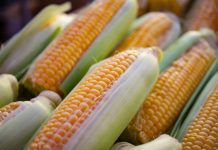Dehydrating foods is easy. It can save money while eating healthier. It is a good way to teach your children about growing gardens and good nutrition.
Learning how to plan, purchase or grow, store and cook foods for the benefit of eating healthier and saving money is sometimes a difficult chore. Do I buy commercially canned vegetables and fruits from the grocery store? Should I learn how to home can fresh fruits and vegetables (which is making a come back) or should I learn how to dehydrate? Does dehydrating sound interesting? Let me give some informative tips.
Table of Contents
Purchasing a dehydrator
When it is time to purchase a food dehydrator, it can be purchased at your local department store. The cost should be less than seventy-five dollars for one that does not contain a fan. Dehydrators that do contain a fan are suppose to dehydrate the foods faster, but this type of dehydrator does cost more. Even so, either is a great investment and can be used anytime during the year, year after year.
Preparation and storage
Wash, peel if necessary, slice and place the foods in the dehydrator trays and it does most of the work. After the foods are dehydrated, they can be stored in glass jars and used throughout the year. Place them in a dark kitchen cabinet away from sunlight and heat, so they will not loose their nutritional value and will not sweat and/or mold.
If foods do mold throw them out. If they molded and were not near a heat source, the foods were probably not properly dehydrated; too much moisture was left in them. By doing these steps, dehydrated foods should last a good while.
Just follow the manufacturer’s guidelines that are in the box at time of purchase to learn what foods can be dehydrated, if they need to be peeled or what size slices need to be cut and how long they need to be dehydrated.
Appearance of foods
When vegetables, such as green beans or squash are dehydrated, meaning most of the moisture has been taken out, they look shriveled and not very appetizing. Don’t worry. When they are placed in liquid for cooking, they will plump back up. Dehydrated fruits, such as banana slices, which make nutritious and tasty banana chips, are great snacks.
Dehydrated green peppers and herbs
After you have dehydrated green peppers, they can be placed in the blender, ground for paprika and stored in a glass container with a lid and away from direct light for freshness. Herb leaves can also be dehydrated and preserved in this manner.



